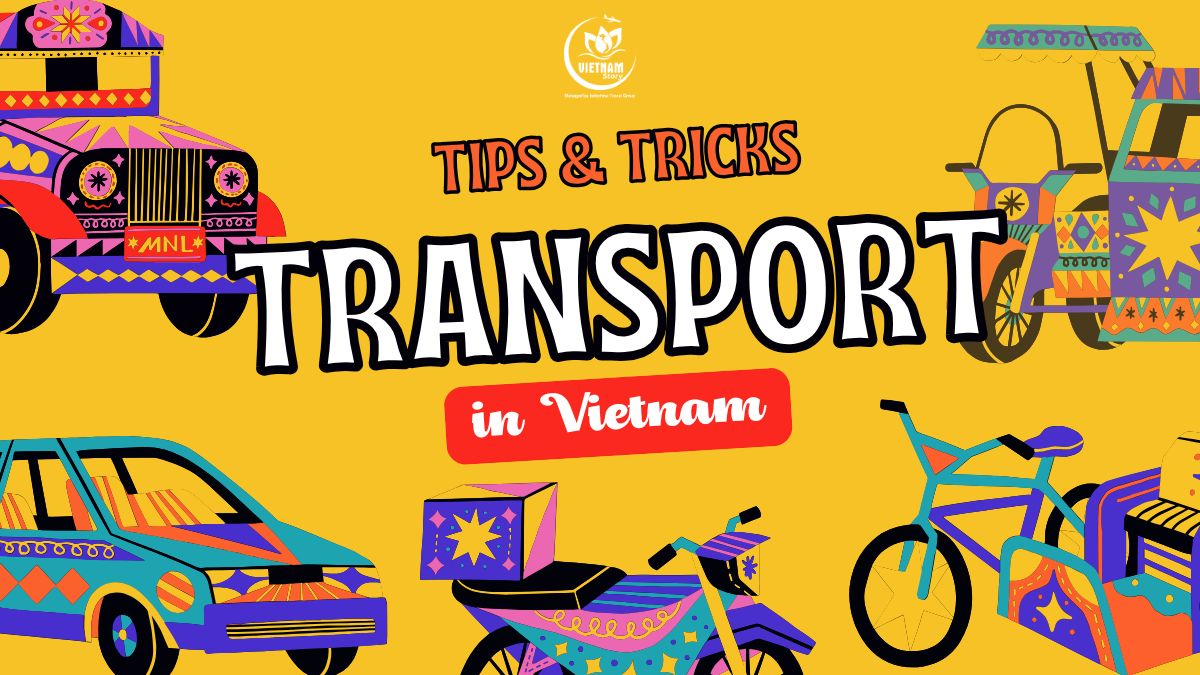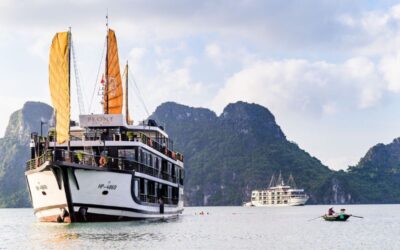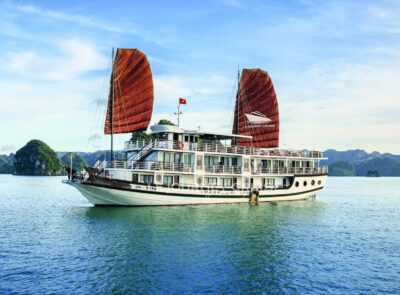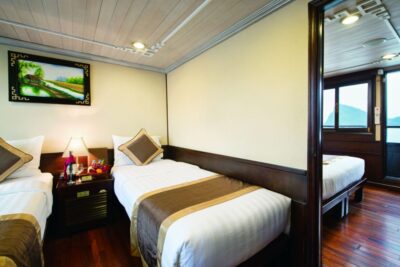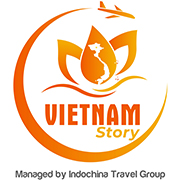Vietnam, a captivating country brimming with diverse landscapes and vibrant culture, welcomes international travellers, including those from India, with open arms. This guide will delve into the multifaceted world of transportation in Vietnam, exploring the various Vietnam travel modes available for getting around Vietnam. We’ll also touch upon essential aspects of managing your finances, as paying for these transport services requires familiarity with the local currency.
For a deeper understanding of financial transactions, our guide to money and currency in Vietnam offers comprehensive insights. Whether you prioritize speed, budget, scenic views, or local immersion, this guide covers the best ways to get around.
Getting Around Vietnam: An Overview of Transport and Payments
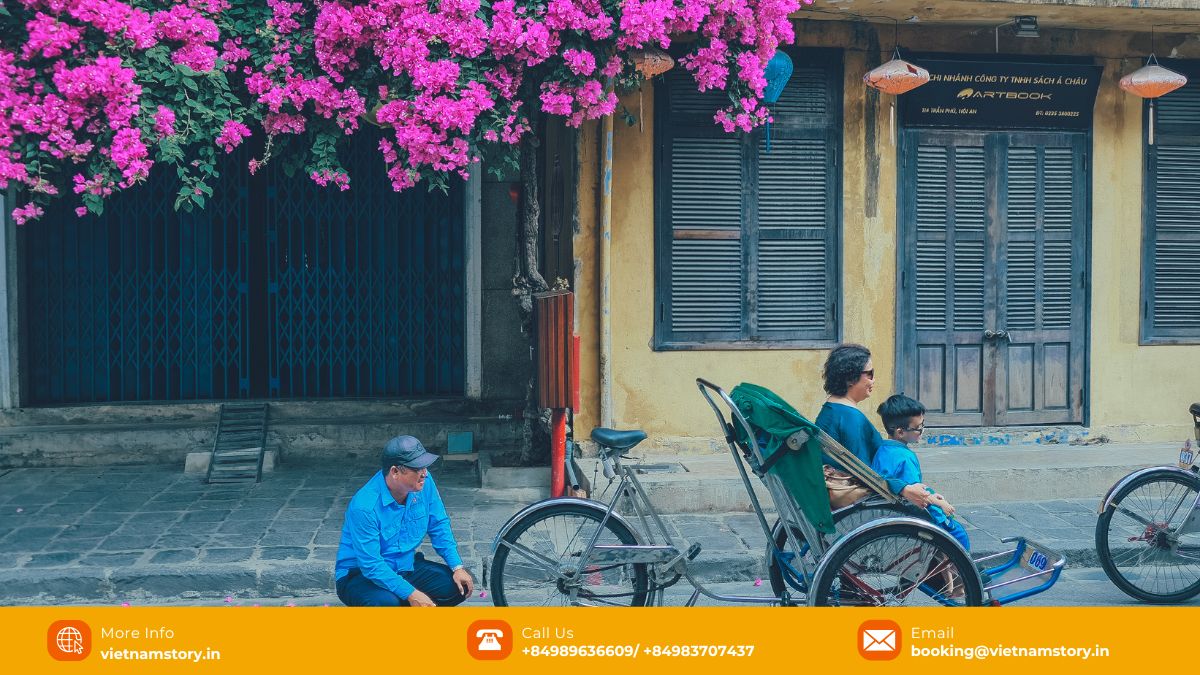
Long-Distance Travel in Vietnam: Connecting Key Destinations like Hanoi and Ho Chi Minh City
When traversing the length of this S-shaped country, from the northern highlands to the southern delta, several key options for transportation in Vietnam stand out.
Flights in Vietnam (By Plane): The Fastest Way for Long-Distance Transportation in Vietnam – Fares and Payments
For those short on time, flying is undoubtedly the most convenient way for long-distance transportation in Vietnam. Many travelers underestimate the vast distances (over 1,700 kilometers from North to South) and the state of some roads. A train journey, such as the iconic Reunification Express route from Hanoi to Ho Chi Minh City, can take up to 30-36 hours. In contrast, a one or two-hour flight allows significantly more time to be spent at your destination. Domestic flight tickets often come with surprisingly reasonable prices, especially if booked in advance using credit cards.
There are daily flights connecting all of Vietnam’s top destinations. Fares can range significantly but booking early might secure flights for around 1,000,000 VND to 3,000,000 VND or more, depending on the route and season. Depending on your travel dates, being aware of Vietnam’s weather patterns can also help in planning flights to avoid disruptions, as seasonal changes can sometimes affect schedules.
Key Domestic Airlines include:
- Vietnam Airlines: As the national carrier, it offers the most daily flights and comprehensive coverage.
- Vietjet Air: A popular budget airline.
- Bamboo Airways, Vietravel Airlines, Pacific Airlines: These carriers also provide affordable deals on short hops around the country, making them excellent choices for budget travel in Vietnam.
Major airports are located conveniently near cities, and you will find currency exchange counters and ATMs at all major international airports. Check baggage allowances, as budget airlines often charge extra for checked luggage; these fees are usually payable by card online or at the airport.
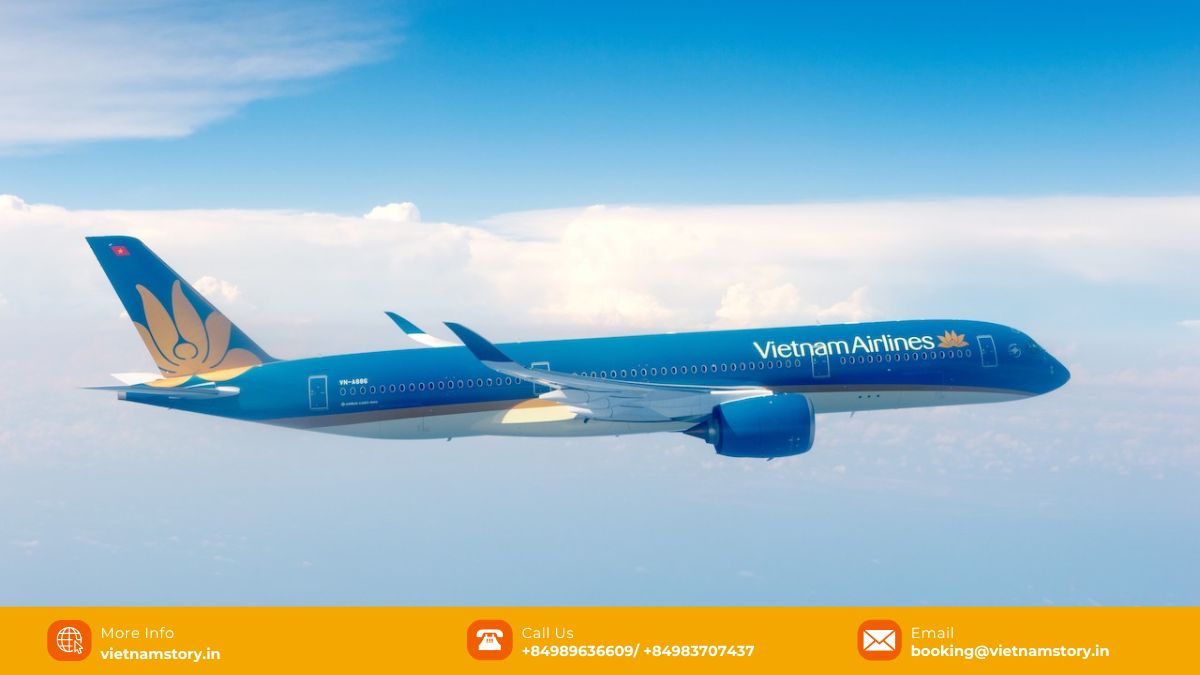
Train Travel in Vietnam (Vietnam Railways): A Scenic and Relaxing Mode of Vietnam Transportation – Booking and Paying
Opting for train travel in Vietnam provides an insightful and relaxing way to journey through the country, watching the diverse landscapes, rice paddies, and coastlines (especially the Hai Van Pass section) unfold. The main North-South railway connects Hanoi and Ho Chi Minh City, passing through many key destinations.
The North and South regions are linked by a single, 2,600-kilometer track network managed by Vietnam Railways. This historic “Reunification Line” snakes its way from Ho Chi Minh City all the way to the Chinese border in the North. Trains typically average about 40km an hour, offering a slower, more immersive travel experience. Various classes are available (hard seat, soft seat, hard sleeper, soft sleeper) to suit budgets and comfort levels. Overnight sleeper trains can also save on accommodation costs, which is a factor to consider when planning your overall Vietnam trip cost from India.
Seat classes generally include hard seat, soft seat, hard sleeper, and soft sleeper. For enhanced comfort, you can opt for soft seats and four-berth cabins, or even splurge on one of the private tourist sleeping cars now available on several key routes. It’s worth noting that the railroad line is undergoing renovations, as much of the existing track dates back to colonial times, so it’s wise to research current conditions before you go.
Soft sleepers offer the most comfort for overnight journeys, and prices will vary based on class; for instance, a soft sleeper berth could cost significantly more than a hard seat, perhaps in the range of 500,000 VND to over 1,000,000 VND for longer routes.
Booking Train Tickets in Vietnam:
- Tickets can be purchased at station counters (e.g., Hanoi Train Station at 120 Lê Duẩn, or Ho Chi Minh City Train Station at 1 Nguyễn Thông) days or even months in advance, using cash VND or cards.
- Travel agencies also sell train tickets.
- Online booking is available through Vietnam Railways’ official ticketing website (dsvn.vn) or trusted agents, often using international credit cards. The State Bank of Vietnam doesn’t directly involve itself in ticket sales but ensures the stability for such transactions.
- Child Ticket Policy: Children under 6 often travel free, and those aged 6-10 may get discounts. It’s best to check the official Vietnam Railways policy at the time of booking.
- Luggage transport and freight forward service is available on Reunification Express Trains.
- All trains typically have both Western and squat toilets at each end of every carriage.
Booking Advice: It’s always a good idea to buy your tickets in advance, especially for popular routes (like Hanoi-Sapa, Hanoi-Hue/Da Nang, HCMC-Nha Trang) and sleeper berths. If you’re traveling during Vietnamese holidays like Tet (Lunar New Year) or other peak times, be sure to book well in advance. Attempting to buy tickets for same-day travel often means the faster trains and best seats will already be taken.
To ensure a smooth journey, it’s essential to book your tickets in advance, particularly during peak seasons. Choose your seat class, whether it’s a hard seat, soft seat, hard sleeper, or soft sleeper, based on your budget and comfort preferences. Remember that luggage space on trains can be limited, so pack light and prepare for a relaxed and scenic adventure through the heart of Vietnam. Be prepared to pay for snacks or meals on board, usually in cash VND.
The Reunification Express:
This isn’t a single train but rather the historic railway line connecting Hanoi and Ho Chi Minh City, completed in 1936. The journey offers a 36-hour scenic ride, making stops in captivating destinations such as Hue, Danang, Nha Trang, and Phan Thiet. Five Reunification Express services typically run daily from both Hanoi and Ho Chi Minh City. There are four classes to choose from: hard seat, soft seat, hard sleeper, and soft sleeper, with cabins divided into four berths and simple bedding provided.

Buses in Vietnam: The Budget-Friendly Backbone of Public Transportation in Vietnam – Cash is Key
Buses represent a vital and economical part of the transportation in Vietnam network, connecting cities and towns across the country. This is where having small denomination VND notes is particularly important, details of which are elaborated in our guide on money and currency in Vietnam.
Open-Tour Buses / Long-Distance Buses:
These are an increasingly popular service for budget travelers, especially in Vietnam’s southern and central regions. Open-tour buses run regularly and reliably between top destinations such as Hanoi, Hue, Hoi An, Nha Trang, Da Lat, Mui Ne, and Ho Chi Minh City. Most of these are sleeper buses or have deep reclining chairs, making overnight journeys more comfortable. A simple “Google search” for “open-tour bus companies Vietnam” will bring up the most reputed operators. It’s recommended to book one or two days ahead, or at least two weeks in advance if traveling during Vietnamese holidays. Tickets can often be bought at bus stations using cash, though some larger companies might accept card payments online or at their main offices.
To ensure a comfortable and safe journey, book your tickets in advance, particularly during holidays or peak seasons, and look for reputable bus companies known for safety and comfort. For longer journeys, consider sleeper buses, which offer reclining seats that allow you to stretch out and rest comfortably. Sleeper buses are particularly convenient for overnight journeys, allowing you to arrive at your destination well-rested and ready to explore. Payment for these tickets is often made in VND.
Local Public Buses:
Within cities, local public buses are popular, especially in bustling hubs like Ho Chi Minh City and Hanoi. Hanoi’s bus connectivity is generally excellent, with routes plying very close to popular tourist destinations. Ho Chi Minh City’s system, while extensive, may fare poorer in comparison for tourist convenience. Public bus tickets are very affordable, with an inner-city ride costing around VND 7,000 (or between 7,000 VND – 10,000 VND). A full day of sightseeing by bus could cost less than VND 50,000.
Buses usually start running quite early (around 5:00 am or 5:30 am) and continue until late evening (9:30 pm or 10:00 pm), with services every 15-20 minutes, or even 5-10 minutes during rush hour. Payment is made in cash (carry loose Vietnamese Dong – VND bills) to the conductor. Hanoi has also recently launched a Bus Rapid Transit system (BRT) where special buses travel on dedicated lanes, allowing for quicker travel times.
However, be aware that local buses can be very crowded and uncomfortable, especially during peak hours. Pickpocketing is not unheard of, so keep valuables secure. Drivers often stop only briefly at each stop, and in Ho Chi Minh City, some buses can be older or unkempt. Additionally, pickup and drop-off points may sometimes be quite far from actual tourist destinations.
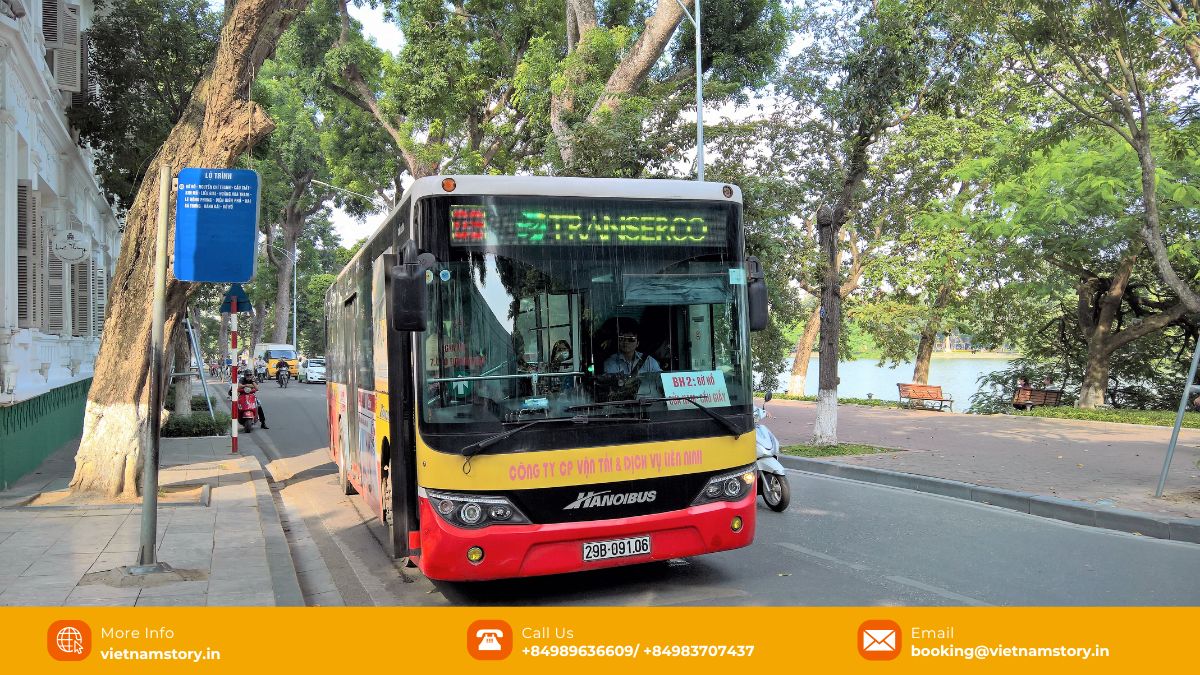
Local Transportation in Vietnam: Getting Around Within Cities and Towns
Once you’ve arrived in a city or town, a variety of local transportation in Vietnam options make exploring easy and often an experience in itself.
Motorbikes/Scooters (Xe May): The Spirit of Vietnam and How to Pay
The motorbike, or ‘Xe May’, is arguably the most iconic form of transportation in Vietnam. They represent freedom, are deeply ingrained in the local culture, and are often the most convenient way to travel short distances and immerse yourself in local Vietnamese life. Riding one, especially in cities like Hanoi or Ho Chi Minh City, is an electrifying experience, putting you right into the pulse of Vietnamese life. For the more adventurous, long-distance motorbiking offers unparalleled freedom to explore hidden alleys, stop spontaneously for photos or coffee, reach off-the-beaten-path locations, and enjoy spectacular views. Novice motorists should be cautious and take time to observe the local style of driving, which is often described as more of an “ebb and flow” than a strict adherence to rules. Motorbike rental in Vietnam is widely available, with shops found in almost every city. Prices typically range from 150,000 to 300,000 VND/day (roughly 450-900 INR) for scooters and mopeds, depending on the quality of the bike. If renting for more than a week, you can expect to leave a deposit (often in cash VND or your passport).
Things to Note for Indian Tourists:
- Traffic Chaos: Vietnamese traffic, especially in cities, is significantly different and can be overwhelming even for those used to Indian roads. Extreme caution is advised.
- Safety First: Always wear a helmet (it’s mandatory). Rent from reputable shops, inspect the bike thoroughly. Ensure you have the necessary license (an International Driving Permit might be required) and adequate travel insurance.
- Security: Use designated parking (often costing a few thousand VND, like 5,000 VND), get parking tickets, and secure your bike. Don’t leave valuables unattended.
- Rental Deposit: Expect to leave a deposit, often your passport or cash VND, for longer rentals.
Motorbike Safety Tips are crucial: Always wear a helmet, never park your motorbike unattended in an insecure spot, and always check the ticket number if you leave it in a parking lot.
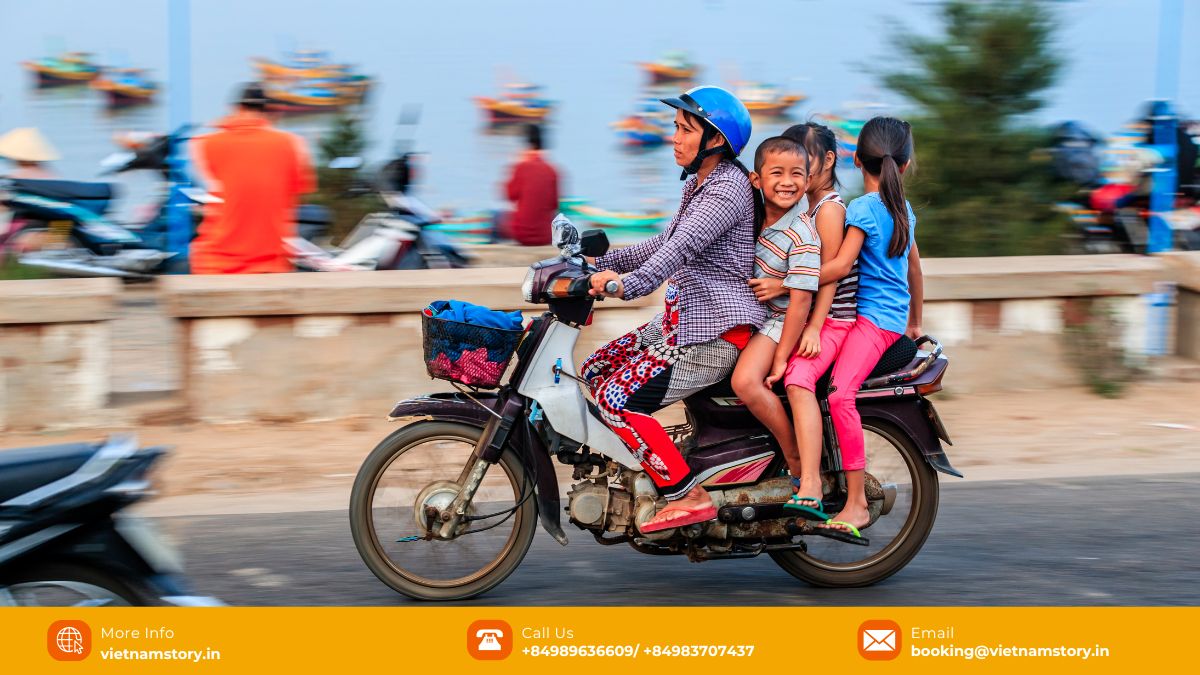
Xe Om (Motorcycle Taxi): Navigating Traffic Like a Local
Xe Om is a prominent and economical means of tourist transport in Vietnam, readily available for short trips. The name ‘Xe Om’ literally translates to ‘hug the driver’, though this is not a requirement! Xe Om drivers can be found practically everywhere, particularly concentrated in areas with high tourist density, and are often identifiable by a ‘Xe Om’ board on their bikes.
Fares are often paid in cash and should be negotiated beforehand, typically ranging from 20,000 VND to 50,000 VND for short city rides, or around 10,000 – 15,000 VND per kilometer for slightly longer distances. All Xe Om drivers are equipped with helmets for their passengers. A major advantage of using Xe Om is their ability to deftly skip through Vietnamese traffic, saving you considerable time. Drivers often possess an excellent knowledge of the city’s nooks and crannies, and the ride itself can be a thrilling experience.
Taxis and Ride-Hailing Apps: Convenient Urban Transportation in Vietnam and Payment Methods
Taxis and ride-hailing apps like Grab, Xanh SM, or Be are readily available in cities and provide a convenient way to get around, especially for short distances or when comfort and direct routes are needed. They offer door-to-door service, air-conditioned comfort, and are useful for navigating complex city addresses. An inner city taxi ride might cost between 35,000 VND to 100,000 VND. Grab offers upfront pricing and accepts both cash VND and card payments linked to the app. Traditional taxis prefer cash payment in VND.
Tips for taking taxis:
- Choose Wisely: Stick to reliable taxi companies (e.g., Mai Linh Taxi, Vinasun Taxi) or use Grab/other apps. Avoid unmarked or dubious taxis to prevent scams or overcharging. Mai Linh is known for efficient service and fair pricing, Vinasun for larger cars, and VinaTaxi (bright yellow) for often lower starting meters (~9,000 VND).
- Meters/Apps: Ensure the meter is running in traditional taxis. Grab provides fixed fares.
- Airport: Use official airport taxi counters or pre-booked Grab for reliable service. You can often find ATMs at airports to withdraw cash in VND upon arrival.
- Communication: Have your destination address written down or on your phone map. Communicating with drivers can be easier if you’re familiar with a few phrases of the Vietnamese language or use a translation app, making your journey smoother.
When choosing a taxi, prioritize safety and transparency. Opt for reputable companies or use ride-hailing apps like Grab, Xanh SM or Be, which offer transparent pricing and often have better safety standards. Always confirm the fare before starting your journey if using a traditional taxi, or check the app’s estimate. For added safety, take a photo of the license plate or save the driver’s contact information in case of any issues. Having smaller VND notes is useful for paying taxi fares to avoid issues with change.
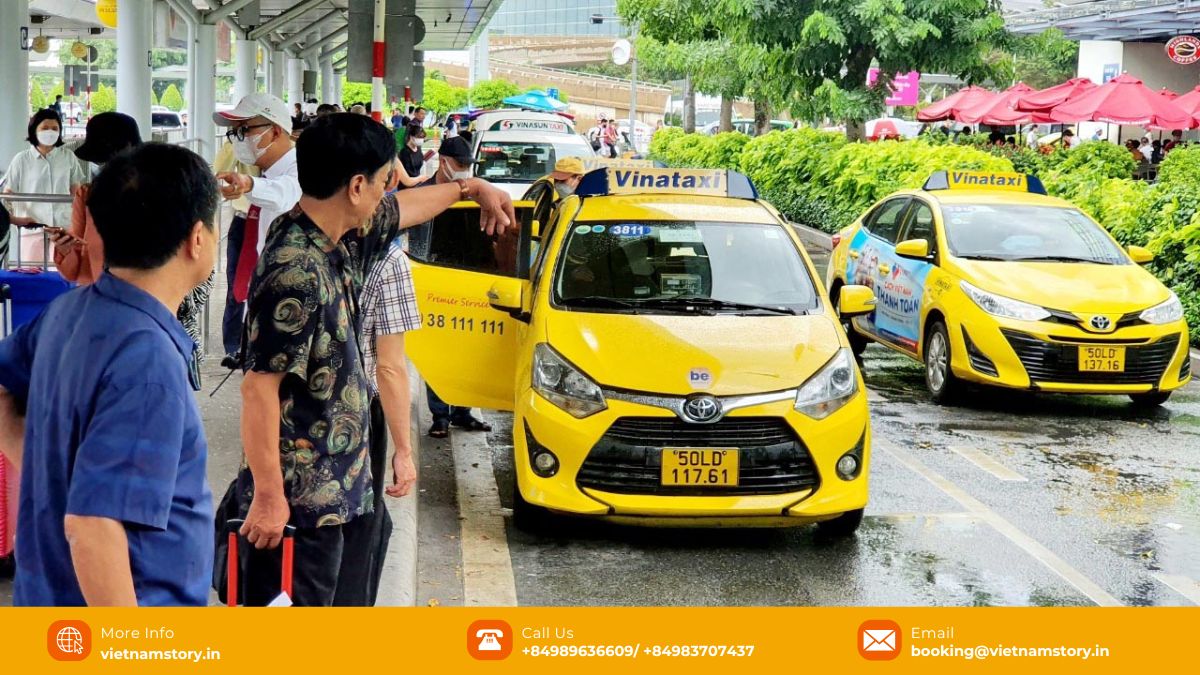
Cyclos: A Traditional and Leisurely Sightseeing Experience
The Cyclo is a unique form of local transportation in Vietnam, perfect for unhurried sightseeing, found mainly in tourist areas of cities like Hanoi, Hue, and Hoi An. This three-wheeled bicycle taxi features a double seat in the front for passengers, pedaled by a driver from behind. While not commonly used by locals for daily transport anymore, it remains a major crowd-pleaser amongst tourists. The snail-pace of the Cyclo gives you ample time to absorb your surroundings, capture memories in photographs, and often takes you through narrow, untrodden streets, offering a fascinating glimpse into local life. Cyclo drivers are easily found near hotels, restaurants, markets, and other tourist spots like Hoi An Ancient Town or around the Hue Imperial City.
A crucial tip: Cyclo drivers are often known to quote exorbitant prices, so it’s smart to negotiate the price (always in VND) and duration firmly before the journey begins. Clarify if the price is per person or for the cyclo. As a general rule, start haggling from one-third of the amount quoted and then go up to half, but not more. A typical ride might be 100,000 VND to 200,000 VND depending on duration and negotiation; shorter, basic rides could be around 10,000 – 30,000 VND. This is a good example where bargaining is common. Using cyclos at night can be risky in some areas due to potential mugging or theft cases.
Cycling (Bicycles): Eco-Friendly Exploration
Whether you’re an avid cyclist or just enjoy a little pedal now and then, Vietnam can reawaken your love for this mode of transport. While cycling is possible in the cities, Vietnam’s small towns (like Hoi An), beach destinations, the Mekong Delta, and parts of Central Vietnam are perfect for two-wheeled excursions. In fact, some of the country’s best guided tours are bicycle tours, particularly popular in the Mekong Delta and Central Vietnam. In towns such as Hoi An and Hue, it’s possible to get to almost everywhere you want to go by bicycle, just as many of the locals do. Bicycle rentals are usually very affordable, about 20,000 to 30,000 VND per day (approximately $1).
Car Rental in Vietnam: Main Transportation in Vietnam and Payment Considerations
Renting a car, often with a driver (which is common and recommended for tourists unfamiliar with local driving conditions), offers comfort and convenience, especially for families, groups, or those travelling longer distances with luggage. This means of Vietnam transport is loved by many for its convenience and comfort, allowing you to go wherever you want without any constraints, and create a flexible itinerary, stopping whenever you like. It’s also convenient for exploring areas beyond major cities. Considering the diverse patterns of Vietnam’s weather, having an air-conditioned car can be a significant advantage during hot or rainy seasons, ensuring a comfortable journey regardless of external conditions. Payment for rentals can often be made by credit card, but driver tips are usually appreciated in cash VND.
Things to Note:
- Self-Drive: Requires an International Driving Permit valid for Vietnam and confidence in navigating local traffic. Renting with a driver often simplifies things.
- Booking: Rent from reputable companies. Book in advance, especially during peak season. Inspect the car and contract carefully.
- Cost: Generally more expensive than other forms of transportation in Vietnam. Daily rates can vary significantly but expect to pay in the range of 1 million VND upwards, depending on the car and duration. Factoring this into your budget will help accurately estimate your overall Vietnam trip cost from India.
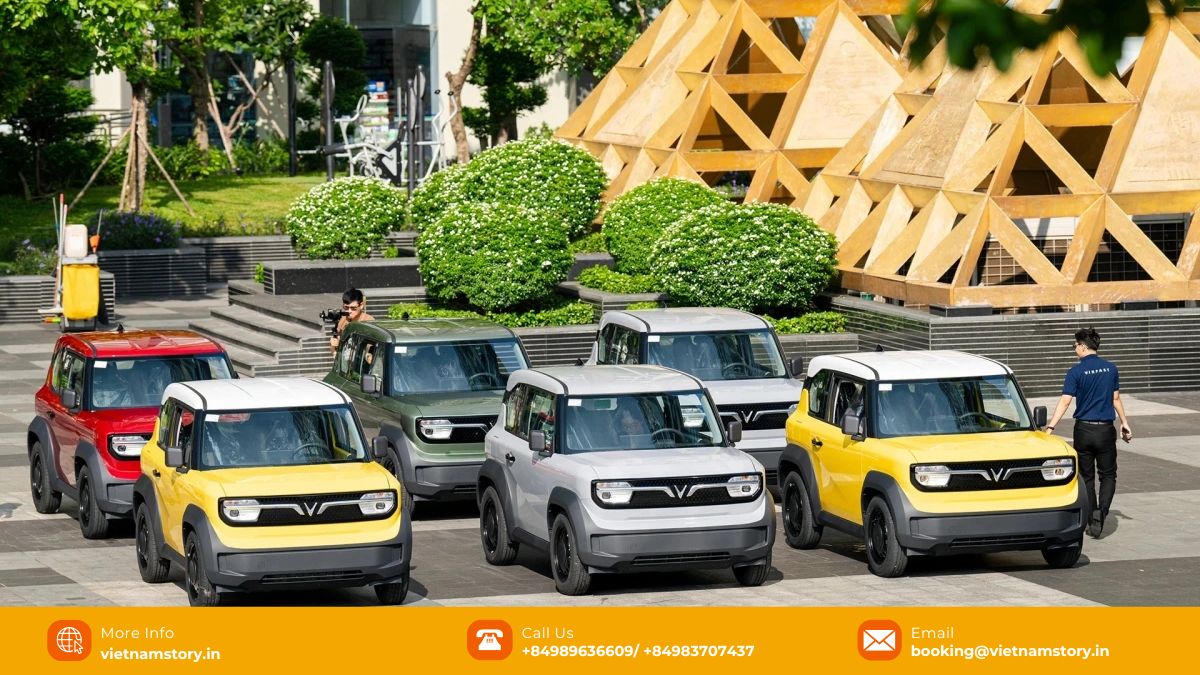
Other Unique Vietnam Transportation Options and Their Costs
- Boats & Ferries: Essential for exploring places like Halong Bay (cruises), the Mekong Delta (river tours, floating markets), and reaching islands like Cat Ba or Phu Quoc. Payments for tours are often made through tour operators (card or cash), while local ferry tickets are usually paid in cash VND. Waterbuses operate in some cities like Ho Chi Minh City with fares typically under 20,000 VND. Remember the unique cultural practice of seeing locals burning “ghost money” near waterways, which is symbolic and not related to actual transport costs.
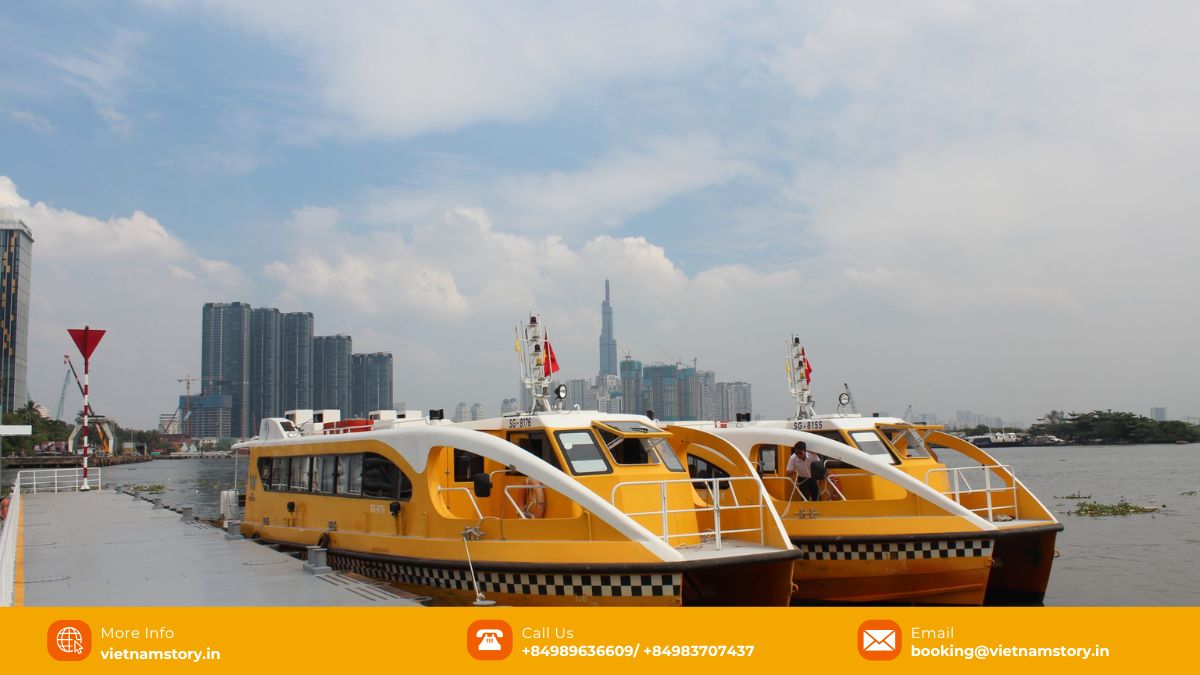
Getting To/From Airports in Vietnam: Managing Your Initial VND Needs
- Taxis: Official airport taxis are available (use designated counters). Fares will be in VND and can range from 200,000 VND to 400,000 VND to city centers.
- Ride-Hailing Apps: Grab is widely used and often cheaper than traditional taxis. Payment can be linked to your card or paid in cash VND.
- Airport Shuttle Buses: Connect airports to city centers affordably, often costing around 40,000 VND to 60,000 VND, payable in cash. Check routes and schedules.
- Public Buses: The cheapest option, but may require transfers and take longer. Fares are typically under 10,000 VND, paid in cash.
- Express Trains: Available in some cities (check specific airport information) connecting directly to central stations.
Choosing the Right Transportation in Vietnam: Balancing Cost and Convenience
- Distance: Flights for long distances, trains/buses for medium, motorbikes/taxis for short.
- Budget: Buses and trains are most economical (often requiring cash VND); flights and private cars cost more (often payable by card). For reference, a sidewalk coffee costs around 25,000 VND, while a street food meal with ice tea is about 45,000 VND, giving you an idea of daily expenses to budget in VND. This detailed breakdown can help you estimate your trip more accurately.
- Time: Flights are fastest; trains and buses take longer but can be scenic or overnight.
- Comfort: Cars, taxis, higher train classes, and reputable buses offer more comfort.
- Experience: Motorbikes and cyclos offer local immersion; trains provide scenic relaxation.
- Safety: Choose reputable providers, use apps like Grab, wear helmets on motorbikes. Be mindful of keeping your money and valuables safe, perhaps using a hotel safe for surplus cash and cards.
Tips for Indian Tourists Using Transportation in Vietnam: Money Matters Included
A little foresight can go a long way in ensuring your journeys using transportation in Vietnam are smooth and enjoyable.
- Book Ahead: Especially for flights, trains (sleepers), and popular bus routes during peak season. This can often be done online with international credit cards.
- Use Apps: Grab is invaluable for rides and sometimes food delivery. Download offline maps (Google Maps, Maps.me).
- SIM Card: Get a local SIM card upon arrival for easy communication and data access.
- Cash is Useful (Vietnamese Dong – VND): While cards are accepted in cities by most establishments like hotels and larger restaurants, carry Vietnamese Dong (VND) for smaller vendors, buses, street food, Xe Ôm, cyclos, and in rural areas. The official currency is the Vietnam Đồng (VND), and no coins are used. Remember the 20,000 VND bill and the 500,000 VND bill can look similar due to their blue shades, so double-check!
- Haggling: Expected for cyclos, Xe Ôm, and sometimes market shopping. Be polite but firm. This is a common practice. Fixed prices are common in shops and for app-based services. Understanding the value of VND (e.g., removing three zeros and dividing by 23-25 for a rough USD estimate) can help in negotiations.
- Basic Phrases: Learning “Xin chào” (Hello) and “Cảm ơn” (Thank you) by exploring the local language goes a long way and is appreciated by locals.
- Stay Aware: Be mindful of your belongings, especially in crowded areas and on public transport. Keep wallets and purses close. Cards with safety technology like Visa’s 3D security system can add protection.
- Tipping: Tipping etiquette in Vietnam suggests it’s not a normal part of Vietnamese culture but is increasingly common for good service, especially for tour guides or in upscale establishments. It’s not expected in basic restaurants or for taxi drivers, but always appreciated.
- Accommodation Synergy: Consider your transportation needs when choosing where to stay. For instance, if staying at premier resorts like those within the Vinpearl system in famous tourist destinations such as Phu Quoc, Nha Trang, or Hoi An, plan how you’ll access local transport or if the resort offers shuttle services.
Conclusion
Understanding the diverse transportation in Vietnam offers a fantastic array of choices for international and Indian travellers. From the exhilarating buzz of a motorbike ride to the tranquil pace of a train journey, each mode provides a different way to experience this incredible country. By understanding your options, planning strategically, having the right mix of cash in Vietnamese Đồng (VND) and cards, and embracing the local ways of getting around, you can navigate Vietnam comfortably, safely, and create unforgettable travel memories. Enjoy your journey through Vietnam’s vibrant landscapes and rich culture!
